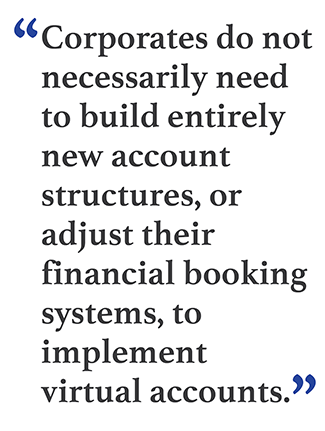
The Single Euro Payments Area (SEPA) is changing the global banking landscape. After years of talk, the transition to a new era of payments in Europe is at last upon us. On February 1, companies that do business in the SEPA zone transitioned to SEPA credit transfer (SCT) and SEPA direct debit (SDD) schemes for making and receiving payments in Europe. The abolition of some legacy payment types was postponed until August, but others such as Abbuchungsauftrag in Germany had already been unacceptable for months.
As the last stragglers finally made the transition, it became clear that Europe's newly harmonized payment system will provide companies with a wealth of opportunities to generate big efficiencies. Even businesses that don't have European interests are finding these changes enlightening.
Recommended For You
By prompting the end of historical division in Europe—division that resulted from the various laws and regulations within national boundaries across the continent—SEPA allows payment processes to be centralized to a degree that wasn't previously possible or, at the very least, was previously much more complex. For instance, the rationalization of payment types serves as the foundation for corporates to create payment and collections factories. These centralized units send or receive payments for multiple subsidiaries.
A payment or collections factory boosts transparency and control in the company's liquidity and cash management. At the same time, it decreases costs and risks, both in terms of individual transactions and IT infrastructure. Taken to the extreme, companies could eventually run their entire Eurozone operations through a single euro-denominated bank account. By rationalizing their banking operations in this way, businesses can cut out unnecessary accounts, e-banking channels, and even entire banking relationships.
Virtual Account Innovation
As companies reduce their number of physical bank accounts, many turn to virtual accounts to retain granularity of information in reporting out to business units on payments or receivables. Thus, as SEPA creates motivation for centralization and bank account rationalization, the framework also fosters an environment in which virtual accounts make good sense. Virtual accounts are not new; Europeans are currently playing catch-up in this area. But their adoption is an important step in fully realizing the efficiency gains available through SEPA-related payments reform.
Similar to a payment factory, a system of virtual accounts routes incoming and outgoing payments through a single corporate banking hub. The practice began in the United States as a means of harmonizing companies' account structures across state lines. In Europe, a virtual account structure typically involves a single, centralized bank account. The single account is then divided, using virtual accounts, into individual branch or profit-center channels. Companies can use local accounts only for payments that must be made in a specific jurisdiction, such as tax payments, and direct all other payments and receivables through the single bank account.
A virtual account structure can even span multiple currencies. Each currency requires at least one physical bank account, which can then be incorporated into the corporate virtual account system.
 Crucially, a virtual account structure includes local identifiers. The virtual account number acts as an identifier for the company's customers, and it can be linked to a specific subsidiary or branch of the organization. This allows branch managers and group treasurers to look at transactions on a branch-by-branch basis, even though physical payments pass through only one account. Moreover, these systems have the potential to provide an individual statement for each account, which means that the corporate treasury department and local subsidiaries retain all the crucial information necessary for efficient, automated reconciliation.
Crucially, a virtual account structure includes local identifiers. The virtual account number acts as an identifier for the company's customers, and it can be linked to a specific subsidiary or branch of the organization. This allows branch managers and group treasurers to look at transactions on a branch-by-branch basis, even though physical payments pass through only one account. Moreover, these systems have the potential to provide an individual statement for each account, which means that the corporate treasury department and local subsidiaries retain all the crucial information necessary for efficient, automated reconciliation.
In our view, these developments and others like them represent the next phase of treasury management, not only in the SEPA zone, but worldwide. And there's nothing (beyond exchange controls, perhaps) preventing currencies outside the SEPA zone from being added to a virtual account structure in the Eurozone. Taking the efficiency-generation opportunities of virtual accounts to the logical—but still feasible—conclusion, global or regional payment hubs for multinational corporates might soon be operating across multiple continents.
Of course, creating a system of seamless international banking is easier said than done. But SEPA is helping move markets in this direction, even in the most challenging of environments. The future of payments is a globally streamlined banking system made possible through the use of banking "portals" capable of authorizing, validating, converting, and directing payments. These "portals" are online tools provided by banks allowing their clients to access all of their accounts from anywhere, through tablets or mobile devices. The result of such a system is that location becomes less relevant and payments become borderless—from the corporate perspective, at least.
At the moment, this type of functionality resides primarily with cash management banks that have particularly extensive knowledge of the Eurozone and non-euro markets within the SEPA zone, as well as neighbouring regions with complicated legal and regulatory systems. Some Central and Eastern European countries, such as Poland and the Czech Republic, are inside the European Union and SEPA areas.
Others, like Russia, are unlikely to join anytime soon. Implementing cash management efficiencies in these jurisdictions is a more challenging prospect, which contributes to the strong demand in these areas for improved cash visibility. That's largely because offering cross-border cash pooling services in a country like Russia requires a financial services provider to work through the nation's complex legal and regulatory systems. Croatia and Bulgaria present similar challenges in Eastern Europe, while many Central and South American countries have opaque cash management systems. Nevertheless, financial institutions are plowing forward, and there is much that SEPA's principles can do to inform progress, even in the most challenging of markets.
Structuring Virtual Accounts
For an individual company looking to consolidate bank accounts and build a virtual account structure, the process can be quite straightforward. Corporates do not necessarily need to build entirely new account structures, or adjust their financial booking systems, to implement virtual accounts. They can precisely map their existing account structure to a new virtual-account configuration and let their bank take care of the rest. However, since the current impetus toward virtual accounts in Europe is being driven by bank account rationalization in the wake of SEPA, a review of the corporate account structure seems an inevitable part of the process.
By assigning each customer a unique account number for payments and receivables, the lack of granular information associated with a single account payments and receivables structure becomes irrelevant. The account number itself acts as an identifier for individual customers and can be linked to certain subsidiaries and branches within the corporate. Moreover, some virtual accounts systems—such as that offered by UniCredit—provide individual statements for each virtual account, granting the corporate treasury department and local subsidiaries all the information they need for efficient, automated reconciliation and payment authorization from different locations.
Companies that operate in the Eurozone undertook their SEPA implementation projects by focusing on compliance. Even a few months ago, that was still the typical corporate's mind-set. Today, however, with the SEPA deadline firmly behind us, it's time for organizations that do business in Europe to look up from the compliance grindstone and see what long-term efficiencies they might gain from the transition. In addition to increasing efficiency, virtual accounts offer companies increased flexibility, efficiency, and control in their account structure. Ambitious corporates, both within and outside Europe, are recognizing virtual accounts as a vital element in their plans for global growth.
 Markus Straußfeld is head of international cash management sales at UniCredit, an Italian bank that is currently building out its cross-border cash pooling capabilities, both in Western Europe and farther afield, including locations in Eastern Europe and Russia. UniCredit's cross-border pooling services to firms in Russia are live and automated, making them the first of their kind in the country.
Markus Straußfeld is head of international cash management sales at UniCredit, an Italian bank that is currently building out its cross-border cash pooling capabilities, both in Western Europe and farther afield, including locations in Eastern Europe and Russia. UniCredit's cross-border pooling services to firms in Russia are live and automated, making them the first of their kind in the country.
© 2025 ALM Global, LLC, All Rights Reserved. Request academic re-use from www.copyright.com. All other uses, submit a request to [email protected]. For more information visit Asset & Logo Licensing.




